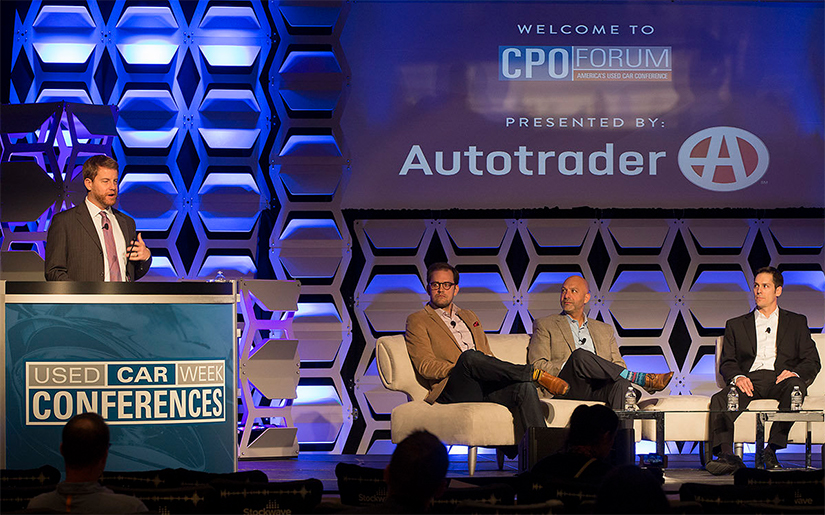Moderating a panel as an editor: See your stories come to life
- February 9, 2018
- Author: Joe Overby
- Category: Business, Communication, Conferences

Joe Overby moderates a panel at Used Car Week. Photo by Jonathan Fredin.
One of the cool things about working at a company like Cherokee Media Group that produces both trade publications and business conferences within the same industry (in our case, automotive) is that as an editor, you get to see your magazine’s reporting and storytelling come to life.
A story about online technology in the used-car market, or the latest pre-owned vehicle sales and pricing trends in our print and digital publications, could be the basis for a panel discussion at our Used Car Week conference in the fall.
As a journalist at heart and by trade, it has been interesting to me to see the worlds of news production and event planning intersect. And given this crossover nature of our editorial and events, I’m fortunate to also work on the conferences team at Cherokee Media Group.
Through this part of my job, I’m often called to be a moderator for panel discussions at our conferences.
It’s something I enjoy immensely. It’s like putting together a news article, but out loud and in real time … while hundreds or even thousands of people watch.
Exciting, yes. Potentially nerve-wracking, also yes.
I’ve been moderating at our conferences for close to six years now, but honestly, I still get a bit nervous beforehand.
So, I try to remember these tips — most of which I have shamelessly borrowed from my boss Bill Zadeits, a former TV/radio reporter-turned-publisher who some say is the illest MC (moderator of conferences).
- Start the discussion by having each panelist introduce him/herself and answer a fun-fact question. Being in automotive, my personal favorite is to ask the panelists about their first car. At any rate, I have found this technique not only gets the panelists and the audience loose, but also helps with any tricky name pronunciations.
- Go beyond the question-answer-question-answer format. This is challenging for me, especially since I like to come up with a list of questions I want to ask beforehand (another tip, by the way). One way around this is to introduce a question like this: “Jane, this question is for you; and John, if you can follow up.” That way, at least two panelists are answering the same question, and it might actually open up into more of a discussion if/when other panelists chime in. Which, by the way, I try to foster by encouraging the panelists before the session to add their input, go back and forth, etc. – even if I didn’t specifically ask them the question.
- If you have a sheet a paper in front of you — with, perhaps, the list of questions you came up with beforehand — write down the name of each panelist in the same order/position in which you see them. Your mind may be racing while you’re moderating, and the last thing you want to do is call someone by the wrong name or forget their name entirely.
- Similar to the open, close the panel discussion by having a round-robin of closing statements. When there are about three to five minutes left, let the audience and panelists know that the session is about out of time. Go down the line and have each panelist give a key takeaway about the topic. It gives the audience something specific to remember. And I have found that it works better than opening the panel up to Q&A, as you can control the clock a bit better. As an alternative to Q&A, mention to the audience that the panelists can answer any questions during the break (if they’re open to that). That drives more one-on-one networking for attendees and allows the event to stay on schedule.
Those are just some of my strategies. The fun part about this aspect of my job is that it is relatively new, and I’m still learning as I go.
So stay tuned for a follow-up.
